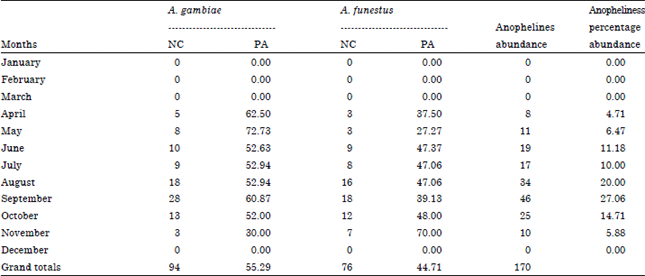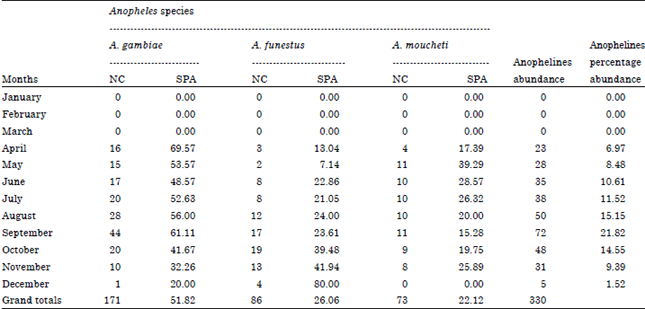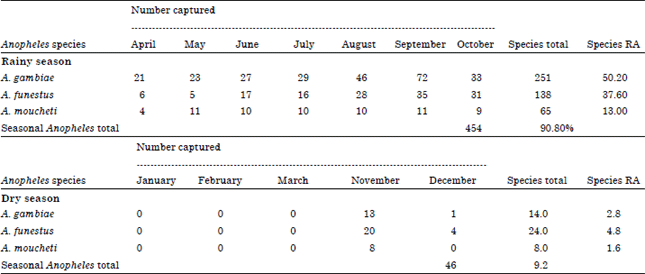Research Article
Seasonal Variations of Nocturnal, Endophagous and Anthropophagous Anopheles Species of Rural Communities in Abia State, Nigeria
Department of Animal and Environmental Biology, Abia State University, Uturu, Nigeria
N.A. Obasi
Department of Science Laboratory Technology, Akanu Ibiam Federal Polytechnics, Unwana, Afikpo, Ebonyi, Nigeria
F.O. Nduka
Department of Animal and Environmental Biology, Abia State University, Uturu, Nigeria
E.I. Okonkwo
Department of Animal and Environmental Biology, Abia State University, Uturu, Nigeria












